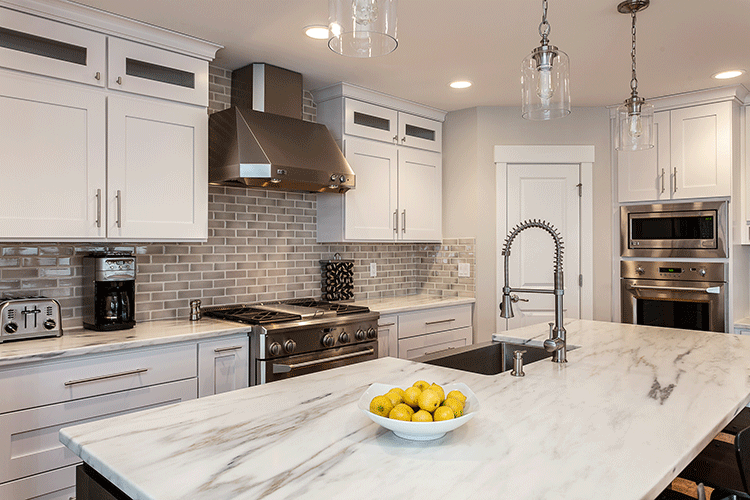Islands are the centerpiece of a kitchen, a place where friends and family seem to gather during discussions, mealtimes, and holidays. They not only provide more countertop space, but they can also be a host for cabinetry, appliances, and sinks as well as offer up more seating with options such as a breakfast bar. This central part of your kitchen requires taking the following things into consideration before deciding on the perfect design for you.

Kitchen Island Size
The size of your island will be determined by the size of your kitchen. A minimum of 36 inches for all walkways is required, but 42 inches to 48 inches is preferred to give you extra room for opening appliances and cupboard doors. If you plan on having a breakfast bar incorporated into your design, you should note that the average bar height is 42 inches and the overhang for the countertop should be between 12 and 15 inches. It is also recommended that you leave 60 inches of room behind the sitting area to allow plenty of room to walk past as well as push bar stools in and out. If your kitchen doesn’t have the square footage to fulfill these requirements, consider a small roll-away island. This can easily be moved out of the way if you have a lot of guests over. The versatility of a mobile island can make eating outdoors a breeze as well, providing more countertop space and seating.

Seating
If more sitting room is what you are in search of, one option for an island is a breakfast bar. Make sure to allow a minimum of 24 inches of width per person as well as 42 inches from the floor to the bar’s countertop. An island is a great way to provide additional seating for your family and friends. You must be realistic about whether or not your kitchen is a good size to try to accomplish this task in because the last thing you want is your kitchen to feel crowded.
What Functions Will Your Island Serve
Determining the functionality of your island should be one of the first things you decide. Are you seeking more open countertop space to work on? A housing unit for appliances and outlets? Will kids be doing homework here and need to plug in a laptop? Will you be baking and need to plug in a mixer?
An island can have multiple functions and it’s wise to consider all of them. From a countertop space with a bar to a cooktop or a sink, there are several options. You can even store your small appliances under the island cabinets or have an open area with shelves. The possibilities are endless when it comes to the style and design of your island, but it ultimately depends on your kitchen size as well as your personal preference.

Kitchen Island Design
Believe it or not, there are many different design options for an island. If an open island design peaks your interest, you can add shelves to display dishes, pictures, or knick-knacks. However, if you are looking for more storage space, a closed design may better suit your needs. The designs are endless, from a rustic, wooden look, to a solid color with cabinetry. Whether you desire functionality or only care about aesthetics, the options are endless.
There are many decisions to make when it comes to remodeling your kitchen, but the island is what brings everyone together. The island will be the main focal point of your kitchen, so determine the island’s purpose, weigh your different design options, and most importantly, look at different islands in person before pulling the trigger.
